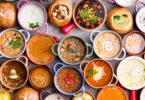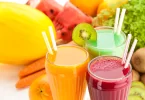There are numerous advantages to eating wisely in order to keep your muscles healthy and well-nourished. It aids in the prevention of fractures. Bone density improves as a result of the strengthening of connective tissues, reducing the likelihood of injury and the development of osteoporosis. A healthy muscle mass has a number of advantages, the most notable of which are as follows:
- Boost your metabolic rate: Our resting metabolic rate rises in direct proportion to the amount of muscle mass we possess. That is, you can burn calories while doing nothing.
- You improve your QOL: As an example, increasing muscular mass improves balance, helps to maintain healthy blood sugar levels, increases the quality of sleep, and helps to relax the mind.
- Improve your posture: Besides that, it can aid in the prevention of nonspecific back discomfort and stiffness (the cause of which is often not discovered).
In order to grow muscle, how long does it take?
Those wishing, in addition to eating well, to gain muscle through a regular exercise plan should be aware that a number of elements influence the outcome. First and foremost, genetics. We are completely helpless in this situation. The following are the other three critical components:
- The manner in which the training is conducted.
- Feeding.
- Rest
The increase in muscle volume that new bodybuilders notice during the first two months is due to increased glycogen stores in the muscles, which helps to keep the fluids in the muscles from evaporating.
In this case, it is vital to think about the long-term consequences. Investing the necessary time and effort to see visible muscle growth is essential. Despite the fact that the first year at the gym shows signs of muscular growth, it is not until the second year that noticeable gains are observed.
What are the benefits of taking care of your muscles?
Unless we maintain a high level of consistency and regularity in our physical exercise throughout our lives, we can lose up to 8% of our muscle mass after the age of forty. This loss will increase by up to 15 percent by the seventh decade of our lives, if we continue to lead a sedentary rather than an active lifestyle, as we have in the past.
Even though these facts may appear insignificant at first glance, maintaining a healthy muscular system (and delaying the “loss” mentioned above) adds greatly to having a stronger, more resistant, and healthier body overall.
Make certain that you are getting the required amount of protein in your diet right now in order to take better care of your body in the future. These are the 12 items that you must include in your diet if you want to build your muscle mass and strength.
-
Spinach
This vegetable is a good source of glutamine, an amino acid that is necessary for the formation of lean muscle mass. In addition, it contributes to the improvement of endurance and muscle tone in athletes. Furthermore, spinach can be used to create a delectable salad with other ingredients. It is possible to make a light yet protein-rich first course by mixing carrots with fresh cheese, walnuts, and other ingredients.
-
Low-fat dairy
Among the best sources of animal protein are milk and its derivatives (yogurts and cheeses). Choosing their low-fat or skimmed milk counterparts is all that matters in this situation. Because they include tryptophan, an essential amino acid that aids in the control of insomnia, taking them at night will help you sleep better and recover faster.
Cottage cheese, which is identical to cheese but does not have the prensar, is a good treat for the muscles because it contains casein, which is a protein that is difficult to digest.
-
Eggs
This cuisine is often regarded as one of the most diverse available on the market. There is a strong emphasis placed on the high concentration of nutrients, their bioavailability (as compared to nutrients present in other diets), and the amino acid balance of the protein contained in this diet. The white portion of the egg carries the most of the protein, whereas the yolk portion contains the majority of the fatty acids.
-
Turkey and chicken
It is possible to gain muscle while avoiding the saturated fats found in red foods such as beef or lamb by eating white meats such as chicken, turkey, or rabbit. White meats are high in protein and have fewer saturated fats than red meat. Chicken breast has 30 grammes of protein per 100 grammes of the meat.
It is not recommended that you cook it in a batter. Grill the breasts if at all possible, and avoid using sauces like mayonnaise unless they are low in calories and fat.
-
Vegetables
Meat and animal products contain a substantial amount of protein. A variety of foods, notably legumes, can also provide the body with this essential vitamin.
Whenever you consume protein meals that are derived from plants, it is vital to supplement your diet with foods that have all of the amino acids that humans require. A chickpea or lentil dish served with rice, for example, is a wonderful combination. Additionally, legumes have a significant amount of magnesium, which may be beneficial in the treatment of cramping.
Furthermore, the fiber content of this food is beneficial to you: according to certain research, a low-fiber diet encourages muscle contractions.
-
Tuna
It is one of the few foods that is almost entirely composed of protein, is easily digestible, and is a terrific ally in the growth of lean muscle mass. Tuna has a higher protein content (23 grammes per 100 grammes) than beef and is therefore a healthier option.
Upon ingestion, omega 3 aids in muscle recovery by stimulating the production of proteins that aid in the repair of injured muscles while also lowering the risk of developing ramps. Other oily fish, such as salmon and sardines, contain omega 3 fatty acids in quantities comparable to those found in tuna. Tuna grilled on the grill with garlic, lemon juice, and parsley is a wonderful style of preparation that is easy to make.
- Red meat
Meat is a high-protein food with a lot of nutrients. Horse meat has the largest content of this vitamin, which is followed by beef, veal, and pork, in that order. Chicken meat, on the other hand, is favored since it offers the same amount of protein as horse meat but contains substantially less fat, making it a significantly healthier alternative.
York ham (18 g protein per 100 g) and Serrano ham (15 g protein per 100 g) are two other high-protein hams to choose from.
-
Peanuts
Despite the fact that they are not the best source of protein, when combined with legumes or whole grains, they provide a complete protein source. Peanuts, walnuts, and almonds are the nuts that contain the greatest protein out of all of them.
Even a small handful makes for a delicious breakfast or mid-morning snack. However, because these foods are high in calories, it is best not to overindulge. There are 567 calories in 100 grammes of peanuts, according to the USDA. Furthermore, nuts and other seeds (such as sunflower seeds) are high in magnesium, which is necessary for maintaining muscle tone and preventing damage.







